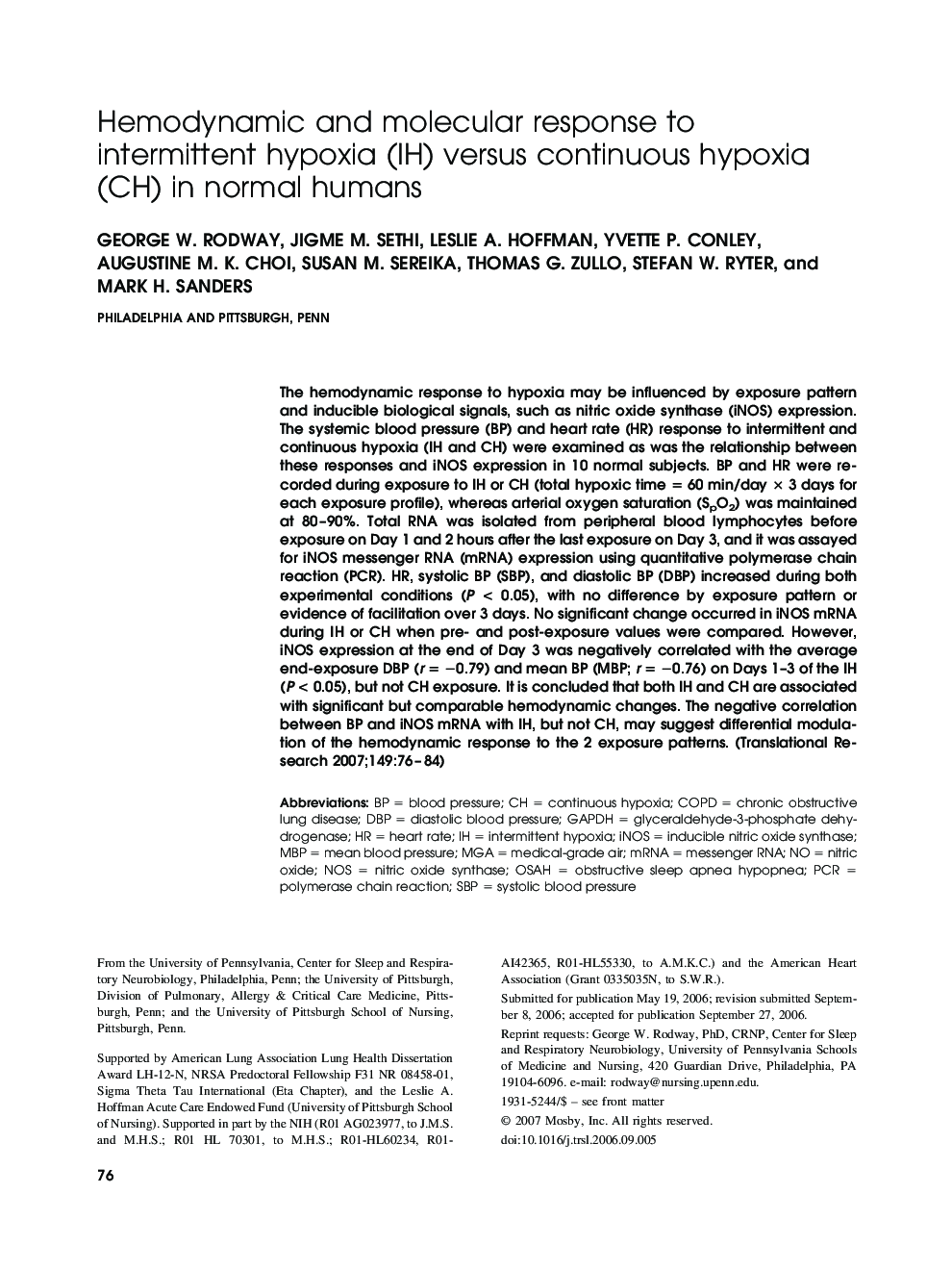| Article ID | Journal | Published Year | Pages | File Type |
|---|---|---|---|---|
| 3841617 | Translational Research | 2007 | 9 Pages |
The hemodynamic response to hypoxia may be influenced by exposure pattern and inducible biological signals, such as nitric oxide synthase (iNOS) expression. The systemic blood pressure (BP) and heart rate (HR) response to intermittent and continuous hypoxia (IH and CH) were examined as was the relationship between these responses and iNOS expression in 10 normal subjects. BP and HR were recorded during exposure to IH or CH (total hypoxic time = 60 min/day × 3 days for each exposure profile), whereas arterial oxygen saturation (SpO2) was maintained at 80–90%. Total RNA was isolated from peripheral blood lymphocytes before exposure on Day 1 and 2 hours after the last exposure on Day 3, and it was assayed for iNOS messenger RNA (mRNA) expression using quantitative polymerase chain reaction (PCR). HR, systolic BP (SBP), and diastolic BP (DBP) increased during both experimental conditions (P < 0.05), with no difference by exposure pattern or evidence of facilitation over 3 days. No significant change occurred in iNOS mRNA during IH or CH when pre- and post-exposure values were compared. However, iNOS expression at the end of Day 3 was negatively correlated with the average end-exposure DBP (r = −0.79) and mean BP (MBP; r = −0.76) on Days 1–3 of the IH (P < 0.05), but not CH exposure. It is concluded that both IH and CH are associated with significant but comparable hemodynamic changes. The negative correlation between BP and iNOS mRNA with IH, but not CH, may suggest differential modulation of the hemodynamic response to the 2 exposure patterns.
